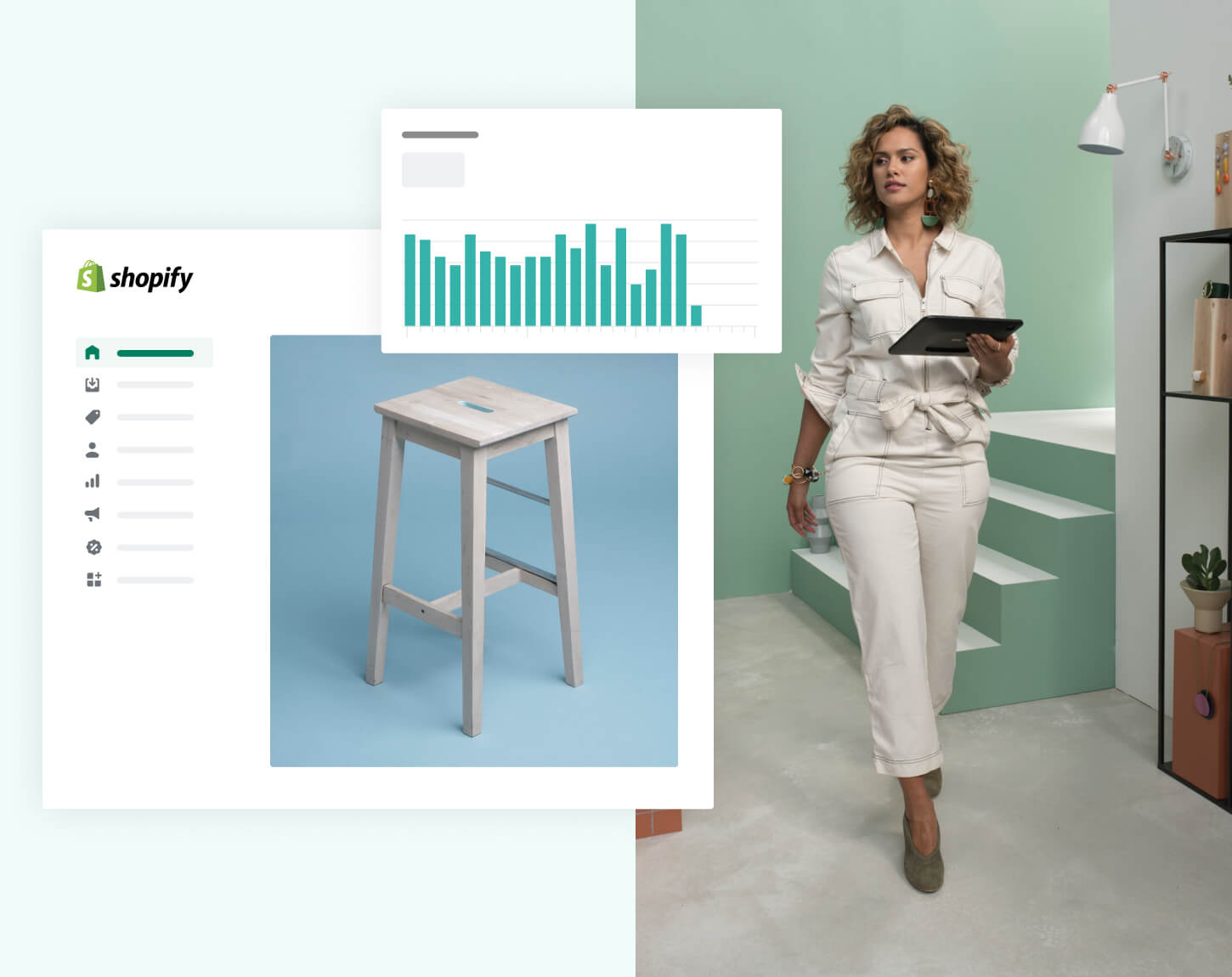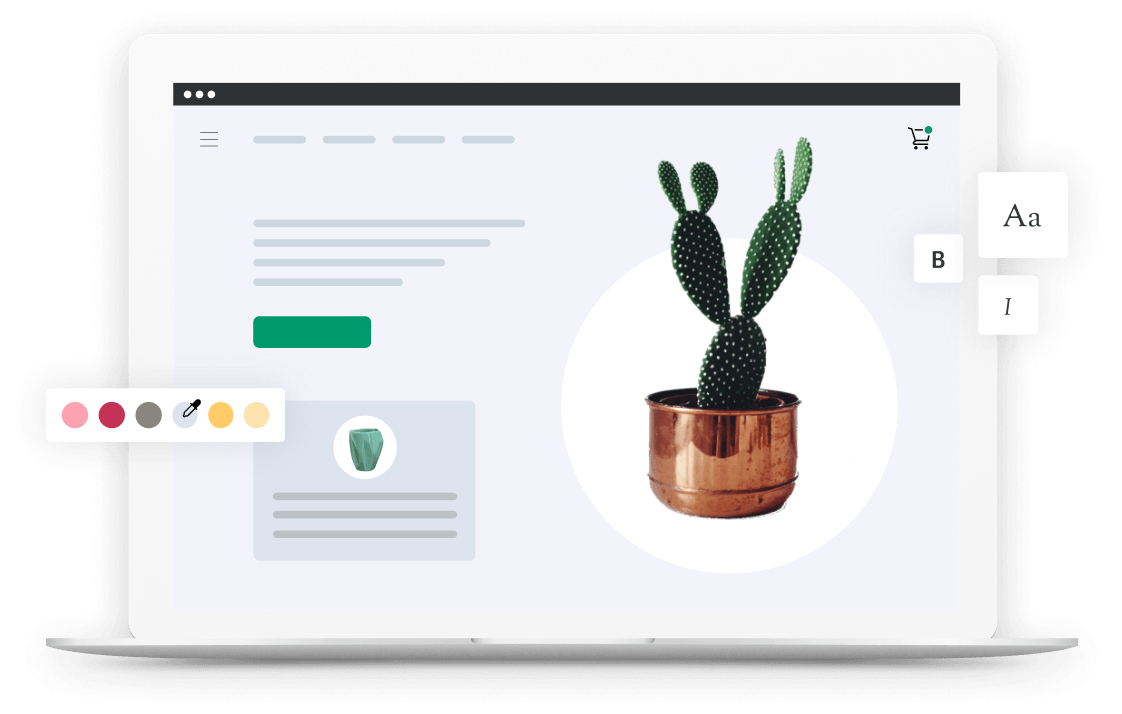Shopify vs Webflow
Shopify or Webflow?
Shopify offers high-quality ecommerce features, POS, native mobile app, and analytics to help you efficiently run an online store.
Experimente a Shopify gratuitamente por 3 dias, sem precisar fornecer os dados do cartão de crédito. Ao digitar seu e-mail, você concorda em receber e-mails de marketing da Shopify.

Why Choose Shopify vs. Webflow
| Key features | ||
|---|---|---|
| Hosting included | Webflow | Shopify |
| Custom domain | Webflow | Shopify |
| Designed for ecommerce | Webflow | Shopify |
| Free themes | Webflow | Shopify |
| Visual editor | Webflow | Shopify |
| POS system | Webflow | Shopify |
| Dropshipping support | Webflow | Shopify |
| Own payment processor | Webflow | Shopify |
| Built-in SEO | Webflow | Shopify |
| Blog CMS | Webflow | Shopify |
| Integrated analytics | Webflow | Shopify |
| Omnichannel capabilities | Webflow | Shopify |
| Unlimited bandwidth | Webflow | Shopify |
| Native mobile apps | Webflow | Shopify |
| Free SSL certificate | Webflow | Shopify |
| Built-in fraud protection | Webflow | Shopify |
| 24/7 customer support | Webflow | Shopify 24/7 in English |
Comece a vender com a Shopify hoje mesmo
Experimente a Shopify gratuitamente e conheça todas as ferramentas e os serviços necessários para começar, administrar e expandir os seus negócios.

10 Things Shopify Can Do vs Webflow
Offer a free subdomain
Shopify offers a free subdomain on .myshopify.com to every user. If you decide you want to use a custom domain name, you can register one on Shopify in only a few clicks. You can choose from a variety of top-level domains and use the domain name generator to come up with creative domain names for your business. On Webflow, you’ll need to buy your domain name from a third party, as subdomains aren’t included.
Add unlimited products
Webflow allows you to list up to 3,000 products on your online store. Shopify, meanwhile, doesn’t restrict you to the number of products you can display on your Shopify store. When comparing Webflow vs. Shopify, businesses with large inventories may prefer Shopify for this purpose. Plus, Shopify’s robust inventory management system makes it easy to track, view, and adjust your product stock.
Dropship with ease
Shopify vs. Webflow: which is the better platform for dropshipping? While Webflow supports dropshipping via integrations, it isn’t the best choice. Shopify is more suitable for dropshipping because it has several apps for selling products without inventory. You can connect your online store with Oberlo, Spocket, Modalyst, Syncee, and many other services to offer dropshipping through Shopify.
Expand your store’s functionality
If you’re looking for features that will improve your customer experience, look no further than Shopify’s 6,000 apps. You’ll find apps to improve your product pages, run loyalty programs, chat live with customers, and more when you sign up with Shopify. Although Webflow offers a range of integrations, its overall count is lower than Shopify’s. Plus, Shopify’s apps are more focused on helping ecommerce businesses succeed.
Sell everywhere
Shopify partners with several platforms, including Instagram, Facebook, Walmart, Etsy, Amazon, TikTok, and Pinterest, to let you sell wherever your customers shop. Shopify also lets you use one product inventory that remains synced across all the channels you sell on via Shopify. While Webflow also lets you access sales channels via integrations, the range is limited compared to the number of channels covered by Shopify.
Recover abandoned carts
Shopify offers an abandoned cart recovery feature on all its plans. Reviewing abandoned checkouts is a great way to find patterns that might suggest why your customers are leaving without completing their purchase. Shopify also lets you set up emails to go out to customers after they have abandoned your checkout, with a link to the customer’s cart to remind them about the products they intended to purchase. Webflow currently doesn’t offer abandoned cart recovery with any plan.
Improve payment experience
When comparing Shopify vs. Webflow, you’ll find that both platforms require a gateway integration for accepting payments. Fortunately, Shopify offers its own payment processor, Shopify Payments, making it easy to conduct business. Because Shopify Payments is a core aspect of the Shopify platform, it has simpler activation, centralized reporting, and no transaction fees.
Unify online and in-store sales
Shopify offers a first-party POS system that lets you unify all your sales in one place. Using Shopify for both your online and brick-and-mortar store, you can keep inventory fully synced, keep track of payments, and offer flexible shopping options customers expect, like in-store pickup, ship to customer, and more. Webflow doesn’t have a POS system, and there are no off-the-shelf POS integrations for the web design tool at this time.
Scale your online store
Aiming to build a recognizable ecommerce brand? You can count on Shopify to offer you the tools and support you need. Shopify stores are scalable, meaning you can start out small and grow into an enterprise-level brand. Larger brands can use Shopify’s enterprise platform, Shopify Plus, to manage high traffic volume and sales spikes.
Brand your business
Shopify isn’t just an ecommerce platform. It’s a complete toolbox for building and branding your business. Whether you want to design a custom logo, create a promotional video, or generate a slogan, Shopify has you covered with free business tools.
Why Merchants Prefer Shopify to Webflow
Built for ecommerce
Shopify wants to make commerce better for everyone. With Shopify, you get the ultimate toolbox for building and designing your ecommerce store. Webflow is primarily a web design tool with an element of ecommerce integrated.
Free themes
Shopify offers over 70 professionally designed website themes, including nine free ones. Although Webflow has more themes available, they come at a price and aren’t as intuitive as Shopify’s.
Smooth shipping
Shopify lets you calculate shipping and print labels directly from the dashboard. On Webflow, you need to use a third-party integration to print labels and perform other shipping-related tasks.
Various marketing tools
Gift cards, automatic discounts, Shopify Email, a blogging CMS—Shopify offers a range of marketing tools to help you provide an excellent shopping experience to your customers.
24/7 customer support
Shopify offers excellent support via email, phone, and chat, 24/7. Webflow, on the other hand, offers email support Monday through Friday.
Mobile app
Shopify offers a mobile app that lets you manage products, orders, customers, and staff from your iPhone or Android. With Webflow, you don’t get a native mobile app, making it challenging to run your business from anywhere.
Built-in fraud detection
Shopify has a built-in fraud analysis to help you identify suspicious orders. Webflow, meanwhile, relies on Stripe and PayPal to provide fraud protection to its users.
Detailed reports
Shopify offers access to a variety of performance reports, such as product reports, finance reports, and many more. Webflow offers reports via third-party integrations, most of which require a monthly subscription.
Product launches
Shopify has the ability to handle large traffic spikes with reliable uptime and hosting. This is important for store owners looking to keep their online store running during important product launches. Millions of merchants worldwide rely on Shopify to keep their stores operational.
International expansion
As Shopify enters more markets, it’s also scaling its resources for global commerce. Shopify merchants can offer a smooth buying experience to local customers with localized stores and multiple currencies. The Shopify App Store also has apps to help you sell like a local on channels like WeChat and WhatsApp.
Em apenas três anos, conseguimos construir algo que muitas marcas não conseguem nem depois de uma década no mercado.
Saiba mais sobre a Shopify

Compare a Shopify
Veja como a Shopify se compara a outras plataformas

Comunidade Shopify
Confira o que outros empreendedores e empreendedoras estão falando nos fóruns da Shopify

Central de ajuda da Shopify
Encontre rapidamente as respostas para todas as suas dúvidas sobre a Shopify
Comece a vender com a Shopify hoje mesmo
Experimente a Shopify gratuitamente e conheça todas as ferramentas e os serviços necessários para começar, administrar e expandir os seus negócios.
FAQs
What is the difference between Shopify and Webflow?
Webflow specializes in regular websites for small businesses like freelancers, whereas Shopify specializes in ecommerce. On Shopify, you get all the tools you need to build your own store, create a brand, and own an asset. The ecommerce element has been present in Shopify since day one, whereas Webflow added it after the main platform was created. Many small- to medium-sized household businesses use Shopify to market their products online.
Which is cheaper: Webflow or Shopify?
Webflow and Shopify have identical pricing for their basic plan, starting at 348/month when paying yearly. Webflow's higher tier plans (Plus and Advanced) cost a bit less than Shopify's higher tier plans (Shopify and Advanced). However, Webflow doesn’t provide you with as many features as Shopify does on its higher-priced plans. Shopify's plans include favorable shipping pricing, access to detailed reports, the option to sell in multiple languages, and more. Shopify allows you to add unlimited items to your store, whereas Webflow allows up to 3,000 products on its most advanced plan.
Which is better: Webflow or Shopify?
Webflow is a good choice for designing visually appealing websites. Shopify has great looking websites too, though. It also focuses on ecommerce and has a wealth of features to help you create a modern-looking store. Gift cards, discounts, fraud analysis, unlimited products—it’s all there in your monthly Shopify plan. For those who want to sell through another website, Shopify offers Buy buttons that embed directly into countless external site pages. Shopify is a commerce platform for your in-store sales and online sales, offering educational resources, financial services, Shopify Experts, and more.
Shopify vs. Webflow: which has better security?
Both Shopify and Webflow provide security features. Shopify is better because it comes with an integrated fraud analysis tool that helps you analyze suspicious orders to avoid potential chargebacks. Both Shopify and Webflow offer free SSL upon signing up.
Which is better at tax calculations: Webflow or Shopify?
Webflow calculates sales tax automatically at checkout based on the location of the customer. However, this option is only accessible to merchants in the US, EU, Canada, and Australia. Shopify’s tax functionality is better, as the platform takes care of sales tax and VAT calculations wherever you are. Shopify users can also set up manual tax rules for specific regions to comply with local laws. Moreover, Shopify automatically calculates your shipping rates and enables you to offer free shipping after a specified price point.
Page last updated: October 5th, 2021
Qual é a melhor plataforma de e-commerce para você?
Saiba por que milhares de empresas migram todos os anos para a Shopify.